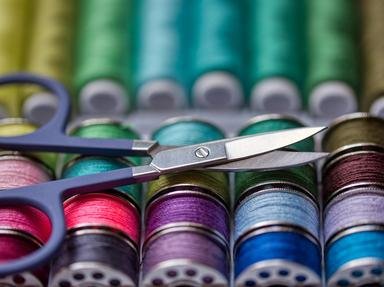Quiz Answer Key and Fun Facts
1. Thimbles have a wide variety of uses, but in the simplest, original form what are thimbles used for?
2. What is the name for someone who collects thimbles?
3. All thimbles have dimpled indents on their sides. What are these dimples called?
4. How does a thimblette differ from a thimble?
5. During the Victorian time, thimble-knocking became a popular practice. What is thimble-knocking?
6. There is an old saying "just a thimbleful" meaning that the thimble was used as a form of measurement. What was most commonly measured by the thimbleful?
7. A popular brand of thimbles are the Dorcas Thimbles, who is responsible for creating this brand of thimbles?
8. What is the fingerhutverein?
9. With the introduction of the more advanced sailing ships, reliable sails became necessary, what kind of thimble was developed specifically for assisting in creating these sails?
10. Many major historical events and people have been commemorated on thimbles. Which of the following has been depicted on a thimble?
Source: Author
jojanne1974
This quiz was reviewed by FunTrivia editor
Bruyere before going online.
Any errors found in FunTrivia content are routinely corrected through our feedback system.

